What is the Problem?
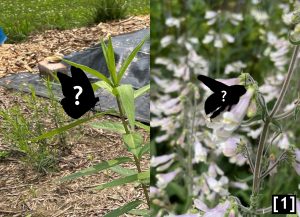 Pollinators are disappearing worldwide, particularly in North America and Europe where human development is most frequent (1,2,3,4). Beekeepers see annual decreases of up to 30% in their colonies and native bees are doing even worse (3). Over a quarter of North American bumble bees have undergone documented declines (3) and butterfly populations in the U.K. have decreased by over 70% (1). These documented declines are emblematic of the large, overall trend: our pollinators are dying. This is a result of a variety of factors, the majority of which are human caused. Human driven habitat loss, climate change, pesticide use, and the introduction of invasive species, pests, and pathogens are the prime causes of pollinator decline (2,4). These factors commonly work together to harm pollinators, as shown by the case of Colony Collapse Disorder (CCD), a detrimental condition that has severely harmed North American bee populations (1). The primary cause of CCD is an introduced pathogen, yet the pathogen is able to be as lethal as we have seen it be due to poor colony health, which is a result of habitat loss and pesticide use (1). Together, these factors are greater than any one of them would be on its own. This symphony of environmental issues prevents insect pollinators from being able to sustain the populations they have had in the past (4), resulting in the declines we are observing today.
Pollinators are disappearing worldwide, particularly in North America and Europe where human development is most frequent (1,2,3,4). Beekeepers see annual decreases of up to 30% in their colonies and native bees are doing even worse (3). Over a quarter of North American bumble bees have undergone documented declines (3) and butterfly populations in the U.K. have decreased by over 70% (1). These documented declines are emblematic of the large, overall trend: our pollinators are dying. This is a result of a variety of factors, the majority of which are human caused. Human driven habitat loss, climate change, pesticide use, and the introduction of invasive species, pests, and pathogens are the prime causes of pollinator decline (2,4). These factors commonly work together to harm pollinators, as shown by the case of Colony Collapse Disorder (CCD), a detrimental condition that has severely harmed North American bee populations (1). The primary cause of CCD is an introduced pathogen, yet the pathogen is able to be as lethal as we have seen it be due to poor colony health, which is a result of habitat loss and pesticide use (1). Together, these factors are greater than any one of them would be on its own. This symphony of environmental issues prevents insect pollinators from being able to sustain the populations they have had in the past (4), resulting in the declines we are observing today.
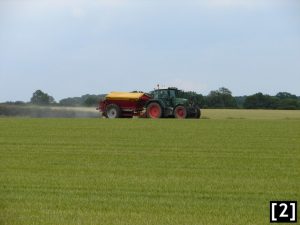 Declines in pollinator populations are seriously concerning because of the crucial role these species play in pollination. They are responsible for the reproduction of over ¾ of flowering plants (2). As a result, insect pollination is critical for the support and wellbeing of the world’s ecosystems and biodiversity (4). Without pollinators, they could both be in jeopardy.
Declines in pollinator populations are seriously concerning because of the crucial role these species play in pollination. They are responsible for the reproduction of over ¾ of flowering plants (2). As a result, insect pollination is critical for the support and wellbeing of the world’s ecosystems and biodiversity (4). Without pollinators, they could both be in jeopardy.
Pollinator loss has effects reaching much more directly into our lives as well. Insect pollination is relied upon for many of the crops we grow today (4). Estimates are that insect pollinated crops represent over 200 billion dollars in value annually (3,4), not counting the immeasurable value of the food they provide for billions of people to eat. Many common foods like almonds, strawberries,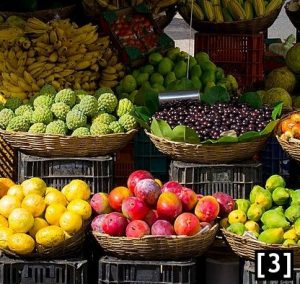 blueberries, and apples rely on these foods and on average about 1 out of every 3 bites of food is dependent upon insect pollination (3). Other plant based items, like cotton, can be pollinator dependent as well (3). Dependency on insect pollinators is woven into our agricultural society and these examples are just some of the many ways we depend on pollinators. It is apparent that we need to act to make sure we don’t lose our pollinators and the benefits they bring us.
blueberries, and apples rely on these foods and on average about 1 out of every 3 bites of food is dependent upon insect pollination (3). Other plant based items, like cotton, can be pollinator dependent as well (3). Dependency on insect pollinators is woven into our agricultural society and these examples are just some of the many ways we depend on pollinators. It is apparent that we need to act to make sure we don’t lose our pollinators and the benefits they bring us.
It is critical that we take measures to help pollinators and fight their decline now. The good news is that efforts have been taken to do this and show some success. Giving pollinators the habitat and resources needed and reducing our pollinator-harming behaviors can improve pollinator numbers and health (3). Education is also an important part of the battle (3), as it is required to start movements that stop pesticide use and habitat destruction. The more people that know about the issue, the more people will be cognizant about how their behaviors affect pollinators. Things we can do to help pollinators are not limited to our behaviors as a society. There are plenty of things we can all do at home to support our local pollinators. Read more about these things and our local pollinators here:
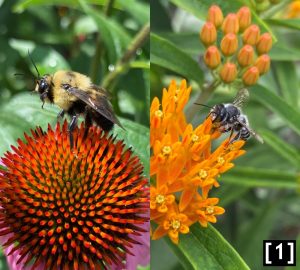
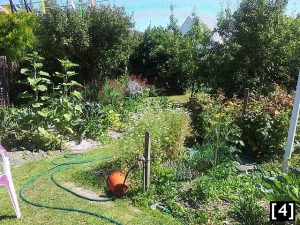
Literature cited
(1) Kluser, S and P Peduzzi. 2007. Global Pollinator Decline: A Literature Review. UNEP/GRID- Europe.
(2) Dicks, L., T. Breeze, H. Ngo, D. Senapathi, et al. 2021. A global-scale expert assessment of drivers and risks associated with pollinator decline. Nature Ecology and Evolution 5: 1453-1461.
(3) Xerces.org. 2021. What’s at Stake. Xerces Society for Invertebrate Conservation.
(4) A. Vanbergen and the I. P. Initiative. 2013. Threats to an ecosystem service: Pressures on pollinators. Front. Ecol. Environ 11: 251–259.
Image Credits
[1] Photos taken by Ashley Arons, 2021.
[2] Paterson, Ian. 2007. “Farming Near Scopwick.” Wikimedia Commons. Retrieved from: https://commons.wikimedia.org/wiki/File:Farming_near_Scopwick_-_geograph.org.uk_-_490149.jpg
[3] www.Pixel.la Free Stock Photos. 2015. “Fruit Baskets.” Wikimedia Commons. Retrieved from: https://commons.wikimedia.org/wiki/File:Fruit_baskets.jpg
[4] Dombroski, Kelly. 2015. “Backyard Garden, Christchurch, NZ.” Wikimedia Commons. Retrieved from: https://commons.wikimedia.org/wiki/File:Backyard_Garden,_Christchurch,_NZ.jpg
This page was made by L.B. as part of Wooster’s Field Botany Fall 2021 Course.